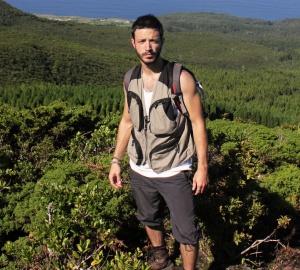Ferrante, M., Lamelas-López, L., Nunes, R., Monjardino, P., Lopes, D.H., Soares, A.O., Lövei, G. & Borges, P.A.V. (2022) A simultaneous assessment of multiple ecosystem services and disservices in vineyards and orchards on Terceira Island, Azores.
Agriculture Ecosystems & Environment,
330, 107909. DOI:10.1016/j.agee.2022.107909 (IF2022 6,6; Q1 Ecology)
Monitoring ecosystem processes resulting in ecosystem services (ESs) and disservices (EDs) is crucial in agricultural ecosystems. Traditionally, ESs/EDs provided by arthropods have been estimated indirectly by measuring arthropod abundance and diversity, overlooking the recognised limitations of such approach. Using a consistent methodology based on the sentinel approach, we quantified the intensity of five ecological processes leading to four ESs and two EDs in vineyards and citrus orchards on Terceira Island, Azores. We assessed herbivory rates on lettuce plants (ED), predation rates on green plasticine caterpillars by vertebrates and invertebrates (ES), the intensity of insect pollination on strawberry plants (ES), the rates of predation on wheat and dandelion seeds (ED and ES, respectively) by rodents and invertebrates, and decomposition rates using tea and rooibos leaves (ES). Herbivory rates after 2 weeks were significantly lower in vineyards (mean ± SD; 0.5 ± 0.6%) than in citrus orchards (3.6 ± 2.9%). Vertebrate predation rates in vineyards (4.0 ± 13.6% d-1) were significantly higher than in citrus orchards (2.4 ± 10.7% d-1), while no differences were observed for overall and invertebrate predation rates. Pollination efficiency in vineyards (214.5 ± 23.9 seeds/fruit) was significantly higher than in citrus orchards (162.0 ± 14.7 seeds/fruit). Seed predation rates were higher, although not significantly so, in citrus orchards (2.0 ± 5.8% d-1) than in vineyards (0.3 ± 0.8% d-1). Decomposition was significantly higher on tea than on rooibos leaves, both in vineyards (1.15 ± 0.11 g vs. 0.72 ± 0.16 g) and citrus orchards (1.34 ± 0.06 g vs. 0.78 ± 0.13 g); no differences between mass loss in the two habitats were observed. Our results demonstrated the suitability of simple, direct monitoring tools for a quantitative comparison of agricultural habitats, confirm that landscape complexity does not always support ESs, and that the same agro-ecosystem characteristics that support ESs could occasionally also favour EDs.






